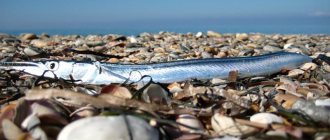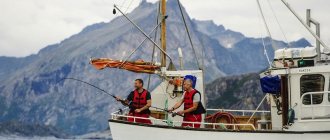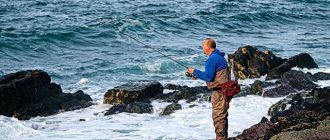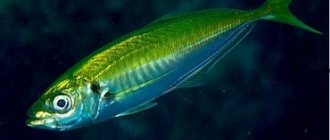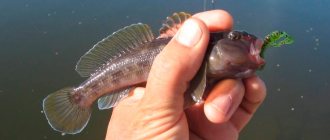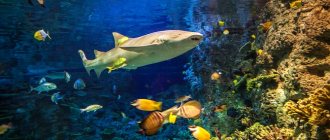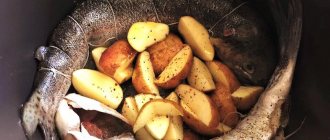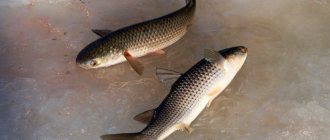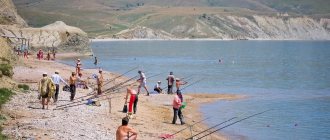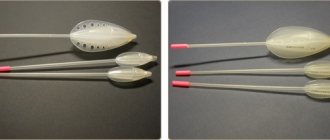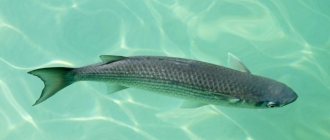Fishing for mullet is possible only in sea and adjacent waters, where active fish come out in schools to search for food. In our country, the production of mullet and related fish species under such names as pelengas, mullet or sharpnose is carried out in the Black Sea waters. Local fishermen take an enviable interest in organizing this kind of fishing, using for these purposes quite standard methods of fishing with float and bottom gear, as well as some specific techniques unique only to catching a trophy in the form of mullet.
The tactics of searching, hooking fish and fishing methods are varied, which is what I would like to tell fishing enthusiasts about in the continuation of the article introducing the reader to fishing gear for catching mullet in the Black Sea. In addition to an overview of the gear, from the information provided, the angler will learn how to effectively find a school of fish, detain it at the fishing point, and what bait to use to catch this delicious trophy.
Habitats and feeding areas
You can catch mullet in the Black Sea in coastal areas where there are rocky rises from deep areas of the water area, as well as in those places where there are artificial structures in the form of breakwaters and piers, concrete embankments and road dams, slopes going to the bottom to depths of up to ten meters . Schools of mullet often choose the quiet backwaters of seaports, bays, estuaries, rivers flowing into the sea, and also inhabit estuaries. When choosing fishing spots, in addition to external signs that facilitate the habitat of a school of fish, attention is paid to the content of the food supply in the waters, which the mullet feeds on.
The fish lives in water areas densely populated with marine mollusks and, in particular, such as mussels and rapana. Places abounding in sea worms, which can often be seen in estuaries, also attract schools of fish. Mullet is not averse to feasting on some types of young algae, especially in the summer when it blooms and is carried by rivers into the sea, where the fish gather in large schools.
Diet
Whitefish: photo description
The main part of the diet of black mullet is detritus, which is a complex organic substance. It includes:
- dead plants;
- remains of worms;
- other aquatic invertebrates.
It also happens: Halibut fishing, types of gear and methods of fishing for halibut, fishing tours for halibut
The loban has a pointed lower lip, thanks to which it can scrape off the top layer of organic deposits from shell rock or rocky soil. Powerful pharyngeal teeth grind rough food, which facilitates its easy digestion. When detritus reserves are low, fish can switch to feeding on living microorganisms.
How to catch mullet in the Black Sea
Mullet fishing in the Black Sea begins in early spring and lasts until late autumn. The fish loses activity only when the water cools below 10 degrees and at such a time goes into open sea waters to significant depths. The most productive season is considered to be summer July and August, when the water is warmest and the fish actively feed in the coastal zone. In the winter months, fishing is possible only in estuaries, where schools of fish, although their intensity has decreased, continue to feed throughout the year. Morning and evening hours are characterized by more active biting. During the day, the fish’s gluttony is a little weaker. During periods of famine, trophies are mined around the clock, including at night.
Fishing on the Black Sea is available both from coastlines and from boats. For the most part, fishing is carried out with bottom gear, although in some places where fish come close to the shores, and the angler’s access to such points is provided by artificial objects, piers and moorings, hunting can be carried out comfortably and effectively with a fishing rod with float equipment. Bottom gear allows you to fish not only in deep areas of promising places, but also provides long-range delivery of bait, which plays an important role in catching such shy and cautious fish as mullet.
From the shore

Mullet is caught from the shore using both float and bottom gear. Float rigs are used in conjunction with fly, Bolognese and match rods, the choice of which depends on the ease of approach to fishing points and casting distance. Feeder rods are used as bottom gear and equipped with spinning rods, making them so-called hooks. For some anglers, bottom fishing with line donks in the classic version and in the version with an elastic band is interesting. All collected equipment for catching mullet is not characterized by increased power, since the fish caught will not please the fisherman with large, prohibitive dimensions. And the thinness of the equipment, provided by light tackle, combined with sensitivity during passive biting, is an important factor for the success of fishing.
From the boat
The tackle for mullet when fishing from a boat is akin to the tackle for vertical trolling. Fish are caught from boats when they move to deeper areas, not far from coastal zones. In shallow waters, fishing from a boat is not promising due to the high timidity of the fish. A school of mullet will never stay under the boat, seeing its shadow and feeling a suspicious noise. At depths of more than 7–10 meters, the fish are not so shy and, during moments of active feeding, happily pick up the bait, which is lowered onto the rod or directly on the fishing line in the form of a garland of baited hooks directly under the boat. Thus, the success of fishing from a boat depends on the correctly chosen point above the actively feeding fish.
Preparation
Loban has excellent taste characteristics, which allows you to prepare a lot of different dishes from it. To bake fish in the oven you will need the following products:
- mullet weighing about 2 kg;
- 6 potatoes;
- 2 tablespoons unrefined sunflower oil;
- bulb;
- 2 tomatoes;
- half a lemon;
- Bay leaf;
- paprika.
Once all the necessary products have been prepared, you can proceed directly to cooking the fish. The process of preparing lobani is as follows:
- the fish carcass is freed from the entrails and thoroughly cleaned;
- washed and dried;
- processed with spices and left for half an hour;
- vegetables are cut into rings and laid out in layers on a deep baking sheet;
- fish cut into equal pieces is placed on top of the vegetables;
- meat and vegetables are watered with vegetable oil and lemon juice;
- The baking sheet is tightly covered with two layers of foil;
- the roasting pan is placed in the oven, preheated to 200 degrees;
- The dish should be cooked within 30 minutes.
The fish prepared according to this recipe has a rich taste and a specific aroma of fragrant spices.
Lobani meat goes well with various vegetables and herbs
It also happens: Equipment for catching silver carp on technoplankton - There are fish here
Black mullet can not only be baked in the oven, but also fried. To do this you will need the following products:
- 500 g lobani meat;
- 2 tablespoons olive oil;
- 50 g wheat flour;
- spices;
- fresh greens.
The preparation of this dish is carried out according to the following scheme:
- the fish is butchered and cut into small pieces;
- the meat is breaded in a mixture made from flour and spices;
- pieces of fish are placed in a heated frying pan and fried on both sides until golden brown;
- Fried loban is sprinkled with fresh herbs.
Dishes prepared from lobani will appeal to all seafood lovers and will not leave even the most demanding gourmets indifferent.
What to catch mullet with
The best way to catch mullet is with animal bait.
Important! The classic animal bait for all types of mullet fish is considered to be the Nereis sea worm, which is stocked in estuaries and placed in alcohol liquid for preservation, thus providing itself with a constantly working effective bait for a long time.
In addition to sea worms, ordinary dung and earthworms, sandworms, as well as the meat of mollusks, mussels and rapana are used for fishing. It is quite suitable for catching shrimp or crayfish meat. Of the plant species, the most promising bait is made from the crumb of French bread, especially if, in addition to the already existing aroma, it is lightly sprinkled with anise oil. You can also quite successfully use various flavored types of dough, selected by consistency and smell for the prevailing fishing conditions.
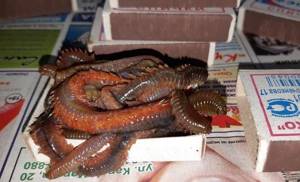
Bait for catching mullet on the Black Sea
Fishing for mullet in the Black Sea from the shore in summer is most productive with the use of preliminary feeding. The bait should arouse the interest of a school of fish and hold the fish in the fishing zone for a significant time. Most often, fishermen independently prepare bait mixtures from ingredients such as flour, white bread, minced sea fish, mussels or rapana. Depending on the taste preferences of the trophy, processed cheese and chopped dung or earthworms are added to the feed. The bait for mullet must necessarily be one of the components of the bait being prepared for fishing.
Feeding tactics
Feeding tactics include daily systematic feeding of the fished area. The fish quickly gets used to feeding food in certain areas, without moving far from the place where they can profit from tasty bait. Having determined the fishing point on the beach, bait is served every day, three days before the start of fishing, and during the fishing itself, food is periodically thrown in as the bite intensity drops. Avid fishermen feed the point throughout the fishing season, constantly obtaining excellent results. Properly prepared bait keeps an insatiable school close to the feeding table for a long time.
Fishing gear
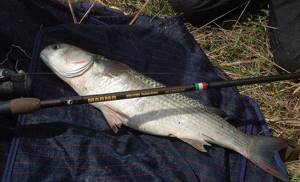
To effectively select tackle for mullet in the Black Sea, you need to decide on the best concentration points of schools of fish and, depending on the distance where they are located, make a decision about the prospects of the tackle. During the warm period of the year, it would be useful to examine the water area intended for fishing by swimming with a mask to inspect the water column for the presence of a trophy. A more effective and convenient method, regardless of the water temperature, will be the method of exploring the water area on a boat with an echo sounder. Having identified the camping sites of the school and decided on the type of gear, you can begin fishing with gear, which we will consider in the continuation of our material.
Float rod
In places where fish come close to coastlines and artificial structures, conventional fly rods are used for fishing. For dynamic hunting, lightweight telescopic fishing rods 5–7 meters long are selected, equipped with monofilament with a diameter of 0.2 mm and including a sticker or spindle-shaped float weighing no more than three grams. The rig is completed with a leash at least 20 cm long and 0.15-0.18 mm thick, as well as a hook with a long shank of at least number eight. The bait is placed at a distance of 15 cm from the bottom, between the stones, and at the slightest movement of the float a sharp hook is made.
Catching mullet on a cup
Fishing for mullet on a cup is very popular among Black Sea fishermen. This is a bottom fishing technique, for which the angler makes a special combined device that acts as a sinker and a feeder at the same time. Most often, a plastic yogurt lid or a blank similar in shape and volume is used for these purposes. A spinning rod or feeder rod with a spinning reel equipped with a 0.15-0.18 mm braided line ending with a carabiner with a swivel is used as the frame of the tackle. The lid at the bottom is equipped with a weight of about 50 grams and is equipped with 0.2 mm monofilament leashes with a hook. The cups are filled with bait and served at the fishing site. When a fish approaches the food, it discovers the bait and swallows the hook.
Fishing from the shore with smoktung
The smoktung bottom tackle, similar to the fishing method presented above, differs only in the shape of the feeder and the use of an additional sliding sinker. The principle of operation is identical to the cup, only instead of the cup a conical spring feeder is installed, directly to which the leash and hook are tied. On one device, and such tackle for mullet is assembled with your own hands, you can install from 3 to 7 leashes. The stroke of a sinker weighing 25–40 grams in the form of a sliding lead olive is fixed on the fishing line using locking rubber bands. Having filled the feeder with bait, the equipment is delivered to the fishing point and, having installed a signaling device on the rod, they wait for a bite. Having noticed the sharp movements of the quivertype, they mark the fish, and having brought the trophy to the shallows, they repeat the operation with the supply of fresh groundbait and bait.
Using Scandinavian equipment
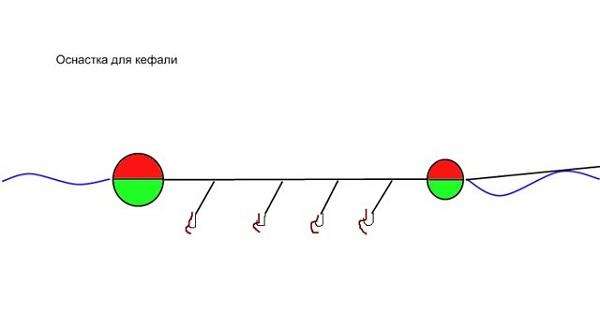
Another interesting method for catching mullet is called Scandinavian rigging. The basis of the tackle is a plug-in or telescopic fishing rod 3–4 meters long, equipped with a spinning reel.
A triple swivel is mounted on a monofilament line with a diameter of 0.3 mm, and a torpedo-shaped sinker weighing about 70 grams is placed on one of the rings. A round-shaped float weighing 15–20 grams is attached to the remaining free ring of the swivel. A monofilament leash is mounted on the alarm antenna, no more than 20 cm long and 0.18 mm thick, equipped with a hook with an elongated fore-end, numbers 6-8 according to the European classification.
Lifestyle
Mullet leads a gregarious lifestyle. Is in constant search of food
4.1 Reproduction - time and characteristics of spawning
Puberty of females occurs at 8 or 9 years. By this age they reach 40 cm in length. Males mature several years earlier. The color of the body becomes brighter, and mating neoplasms appear on the body.
Before spawning it feeds abundantly. Finds food in sea bays. By June it returns to sea waters and spawns until September. Females are not very fertile; at one time they are capable of laying up to 7 thousand eggs in the heated sand of shallow water, where they mature.
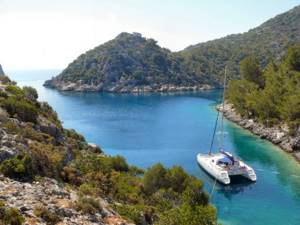
A bay is a part of the sea that flows deep into the land and has its own water exchange.
4.2 Diet - what to eat
The main food is bottom silt. It also feeds on small invertebrates, worms, zooplankton and marine vegetation.
